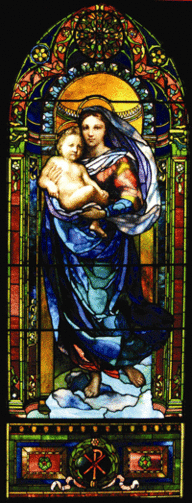As a sophomore at Boston College in 1971, William Vareika was meditating in Henry Hobson Richardson’s grand Trinity Church in Boston—and wondering what he could possibly write about to fulfill the requirements for his 19th-century art history course. Looking up at the dazzling stained glass windows and murals by John LaFarge, he found his answer and, without knowing it at the time, a life-long vocation.
Though he graduated as a pre-law student, Mr. Vareika found that he had a good eye for the fine arts and an equally remarkable sense of place. In time he became engaged in exploring LaFarge’s wide-ranging, eclectic and innovative work. Born in New York City in 1835, La Farge first journeyed to Newport, Rhode Island in 1859 to study painting with William Morris Hunt. He eventually bought a house in the town and married the socially prominent Margaret Mason Perry. For the rest of his career he remained deeply influenced by the light and natural beauty of Newport and Narragansett Bay around it. La Farge also kept a studio in Greenwich Village studio until his death in 1910, where he produced thousands of windows, murals, landscapes and still lifes.
In a skillfully hung exhibition of some 160 pieces at the William Vareika Fine Arts gallery in Newport, which Mr. Vareika and his wife Alison have run for over 20 years, visitors can see how La Farge anticipated the plein-air approach of the Impressionists in strikingly simplified landscapes and exquisitely painted flower studies such as the iconic “Water Lilies in a White Bowl” (1859). One can also view his visionary etchings, which rival the compositions of the poet William Blake. There are also water-color studies combining subtle color schemes and elegant patterning, two portraits of his wife and numerous biblical scenes. (The artist’s son John became a distinguished Jesuit priest and writer active in “interracial” justice, and was for many years an associate editor, and editor-in-chief of America.)
The main reason for the show, and its centerpiece, are nine opalescent glass windows (a technique La Farge invented), eight of which were commissioned for a Newport home around 1890. After being transferred to a convent in Fall River, Mass., in 1930, they were saved in 2004 for installation in a chapel being designed by Robert A. M. Stern for Salve Regina University in Newport. (Part of the proceeds from the show will benefit the installation.)
The windows are warm and winning, particularly La Farge’s version of Raphael’s Sistine Madonna. If you can’t catch the show before it closes on November 30 don’t fret: they will be at the university permanently.








